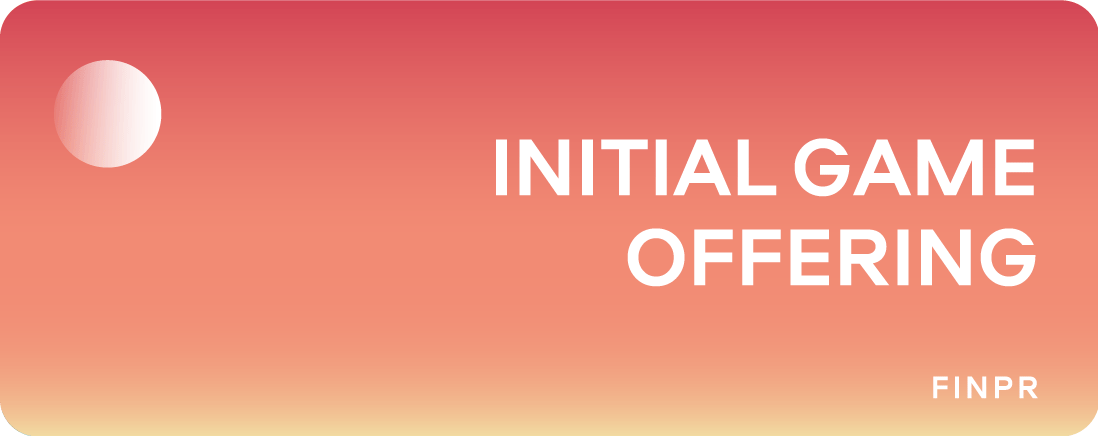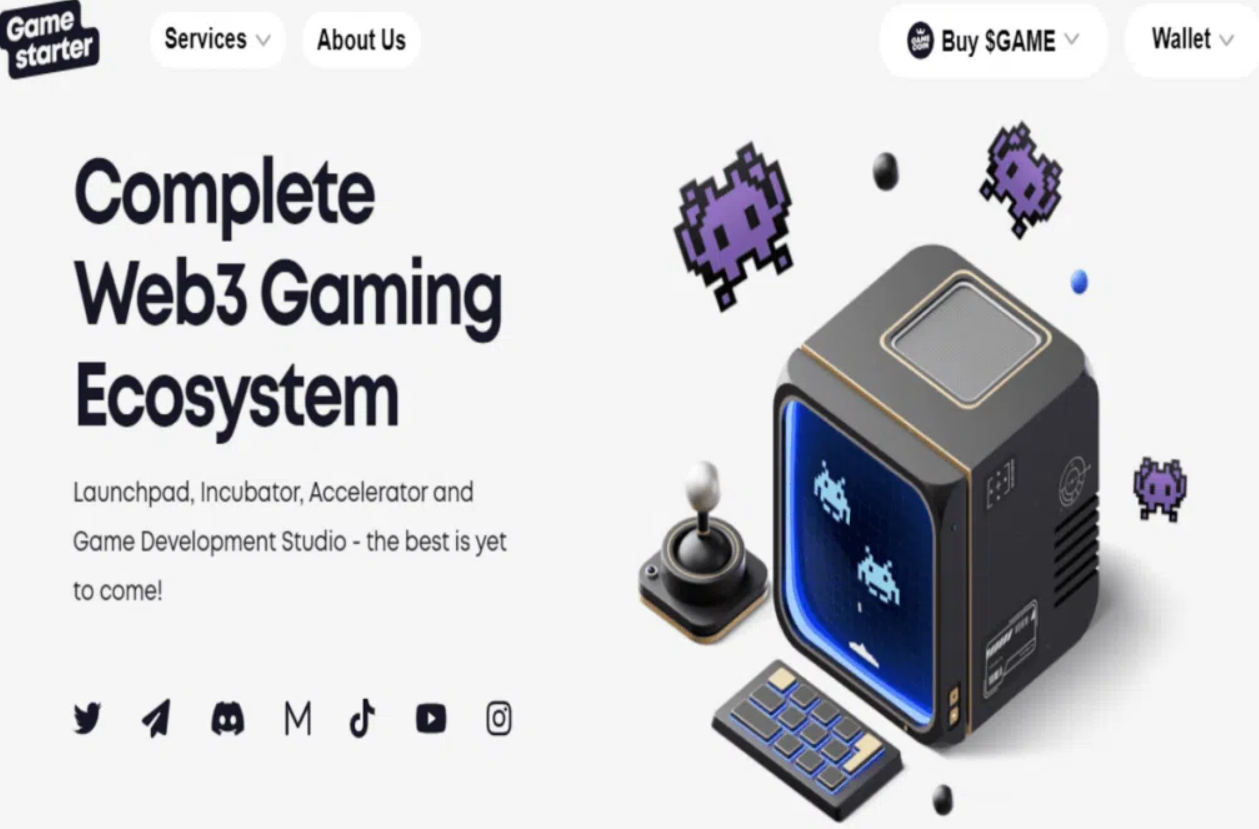
Launching a successful Web3 game takes more than great graphics — it demands engaged communities and smart tokenomics. Enter IGOs: a launchpad-driven fundraising method that lets studios raise millions, reward early supporters, and spark viral buzz long before the first level loads.
IGO Fundamentals
Blockchain games finance themselves differently from traditional studios, and Initial Game Offerings (IGOs) are the core funding rail that makes that possible. An IGO lets a game studio sell tokens or NFT-based game assets before launch, raising capital and boot-strapping a player community at the same time. Investors stake or lock the launchpad’s native token to get an allocation, receive early assets on favourable vesting terms, and — if the game succeeds — share in both gameplay utility and secondary-market upside. Below are the fundamentals every developer, backer, or player should understand.
Core Definition and Mechanics

IGOs are the gaming-specific cousin of ICOs and IDOs: they crowd-fund new titles by selling in-game tokens or NFTs via a specialised launchpad rather than a generic DEX or equity platform. Tokens bought in the sale can later be used in-game or traded on public markets, giving early supporters tangible upside if the title gains traction.
The typical flow is:
- Preparation – studio publishes white/lite-paper, completes smart-contract audit, builds social channels, and applies to a launchpad.
- Whitelisting & Tiering – launchpad opens KYC; backers secure slots via a tier/lottery model tied to the pad’s native token.
- Token Generation Event (TGE) – a small tranche (often 10–25 %) unlocks immediately; the rest follows a vesting schedule.
- Listing & Live Ops – tokens list on DEX/CEX; studio delivers gameplay milestones, distributes further unlocks, and runs live events to keep liquidity and engagement high.
Token Types Issued
Blockchain games usually mint one to three interconnected asset classes:
- Utility / In-game tokens – spent for crafting, upgrades, or entry fees; may also serve as inflationary rewards.
- Governance tokens – scarcer, carry voting rights on balancing, treasury use, or sequel road-maps.
- NFT game assets – characters, land, skins, or mystery boxes that confer gameplay advantage and can be resold.
Some projects merge the first two (single-token model) for simplicity, while others adopt a dual-token model to separate transactional flow from governance and dampen price shocks.
Funding Rounds & Vesting Schedules
IGOs almost always layer multiple rounds:
- Seed / Private – strategic VCs or guilds at steep discounts, cliffs of 6–12 months.
- Public IGO Sale – launchpad community; 10–25 % unlock at TGE, remainder linear over 3–18 months.
- Community / Airdrop – small % reserved for marketing or tournament rewards.
Common structures include:
- Linear vesting – identical monthly or daily unlocks; easiest for players to track.
- Graded vesting – variable tranche sizes tailored to product milestones.
- Cliff + Linear – 0 % until a cliff (3–12 m), then steady release; popular for team/advisor allocations to align long-term incentives.
Clear vesting tables in the white-paper are vital; poorly designed unlocks can trigger post-listing supply gluts and token dumps that cripple game economies
How IGOs Work: Step-by-Step Lifecycle
An Initial Game Offering unfolds in three successive movements—pre-launch groundwork, the public sale itself, and a post-launch stewardship phase. Each movement draws in a slightly different cast of actors and relies on specific on-chain milestones to keep confidence and momentum high.
1. Pre-IGO Groundwork
Everything begins with a persuasive white- or lite-paper that explains the game concept, its economy, and how raised funds will be used; this document is still the main trust signal for early backers. Studios then commission a smart-contract audit to make sure the token code cannot be exploited, a step most launchpads insist upon before listing.Once the technical pieces are secure, the team applies to a launchpad such as GameFi.org or Seedify, where due-diligence checks cover team KYC, tokenomics soundness, and marketing readiness. During this window, Discord and Telegram communities are nurtured so that social metrics look healthy by the time whitelisting opens, because many pads allocate sale slots partly on community engagement. Finally, token-supply models are stress-tested; linear or cliff-plus-linear vesting is chosen to avoid a sudden post-listing glut.
2. IGO Launch
When whitelisting starts, would-be backers pass KYC and lock a pad’s native token to qualify for an allocation tier; higher tiers demand larger stakes but guarantee a bigger slice of the public sale. On launch day the sale usually opens with a guaranteed window for tiered buyers and then flips into a short first-come, first-served round, a cadence popularised by OceanLand’s IGO and now common across pads. At the token-generation event a smart contract mints the game token, releases a small tradable portion — often ten to twenty-five percent — and routes the raised capital to the studio escrow. Within hours the token is paired with a base asset on a DEX so early holders have immediate liquidity; locking most of that pool’s LP tokens has become best practice to signal long-term commitment.
3. Post-IGO Stewardship
After the buzz of launch subsides, vesting calendars take over. Remaining tokens unlock either linearly or against clear development milestones, a structure that lets the economy expand only as the game adds utility. Once market depth is sufficient, teams start negotiating listings on centralised exchanges to tap larger liquidity while keeping an eye on price volatility. Meanwhile, in-game events, staking programmes, and guild scholarships channel circulating supply back into active play, reinforcing demand rather than speculation. Over time governance proposals allow token holders to vote on balance patches or treasury spending, turning early financiers into co-architects of the game’s future direction.
Due-Diligence Checklist for IGO Investors
Before staking launchpad tokens or wiring stablecoins, treat every Initial Game Offering like an early-stage venture deal: verify the people, the product, the numbers, the paper trail, and the exit path. Skipping any of these angles is how backers end up with illiquid assets or, worse, a rug pull. The items below are framed as questions you should be able to answer — clearly and with evidence — before you click “Join Sale.”
1 │ Team & Track Record
First confirm that the studio’s founders can actually ship games: LinkedIn histories, past releases, or open-source repos are stronger proof than glossy artwork. Seedify’s own listing rules note that projects pass only after “strict due-diligence processes” on founders and advisers, signalling how much weight launchpads put on team quality. Dig further for undisclosed affiliations and check whether any core member has previously exited or abandoned Web3 ventures—DAO Maker’s SHO model, for instance, requires months-long token locks precisely to deter fly-by-night founders.
2 │ Game Concept & Development Status

Concept art is cheap; a playable build or public demo is not. Cointelegraph warns that many IGOs raise on “conceptual early-stage” promises, leaving investors exposed if milestones slip. Gate.io’s guide to GameFi launchpads adds that tier systems are meant to funnel funds toward projects that can show concrete progress, so demand video footage or a live test-net before subscribing.
3 │ Tokenomics & Supply Discipline
Healthy in-game economies start with capped emissions and clear sinks. A primer from SDLC Corp calls tokenomics “the backbone of any GameFi economy,” stressing the balance between utility, governance, and NFT assets. Cross-check the white-paper with public data: CryptoRank’s vesting calendars reveal the exact unlock cliffs for many IGO tokens — if 70 % of supply unlocks inside six months, pricing pressure is inevitable. Collective Shift’s investor note on token-unlock events shows how abrupt releases regularly trigger double-digit draw-downs.
4 │ Launchpad Mechanics & Allocation Fairness
Not all pads are created equal. Seedify ties allocation size to how long backers stake $SFUND, reducing mercenary capital turnover. DAO Maker requires a minimum of 2 000 staked $DAO to enter its “Strong-Holder Offering,” filtering out quick flippers. Check fee structures, refund clauses, and whether unsold tokens are burned or returned to treasury.
5 │ Security Hardening
TokenMinds’ best-practice guide lists third-party smart-contract audits and bug-bounty programmes as non-negotiable. Absence of an audit—or a single audit from an unknown firm — is the fastest way to disqualify a sale. Remember that most catastrophic exploits are copy-paste errors discovered only after main-net launch.
6 │ Community Quality & Guild Dynamics
A large Discord means little if it is botted. Coinbase notes that serious gaming guilds run their own due diligence and blacklist projects with opaque mechanics, making guild participation a proxy for community health. Engage with AMA sessions; evasive answers to gameplay-loop questions hint at design gaps that no marketing push can fix.
7 │ Regulatory & KYC Compliance
Investopedia reminds us that due diligence originated as a legal shield; unregistered securities sales can expose both issuer and investor to claw-backs. Verify that the launchpad enforces AML/KYC and blocks sanctioned jurisdictions; courts have already voided token raises that ignored these basics.
8 │ Liquidity & Vesting Outlook
Map the unlock timeline against the studio’s release roadmap. Tokenomics articles on Cardano Spot show how dual-token models can cushion early sell pressure — only if the soft-currency faucet is metered. Medium’s post-mortem on Axie Infinity illustrates how misaligned emissions can stall a marquee title despite huge initial traction. If future liquidity depends on a single CEX listing, you are betting on an event the team does not control.
9 │ Red-Flag Stress Test
Run one final check: would the project survive a six-month delay or a 70 % market draw-down? Time magazine’s deep dive into Axie’s 2022 collapse shows the human cost when earnings projections evaporate. If your downside scenario equals “token goes to zero,” size your allocation accordingly — or walk away.
Bottom line: an IGO worth backing can answer every point above with transparent data, third-party attestations, and measurable milestones. Anything less means the risk premium still outweighs the potential play-and-earn upside.
Summing Up
Initial Game Offerings represent a revolutionary shift in how blockchain games are funded, developed, and experienced. By enabling studios to raise capital directly from engaged communities and early adopters, IGOs foster a more transparent and participatory ecosystem where players are not just consumers but stakeholders. However, with this new frontier comes unique challenges — volatile token economics, regulatory uncertainties, and the risk of under-delivery — that require careful navigation.
As the space matures, expect to see smarter launch mechanisms, deeper integration of play-to-earn incentives, and stronger governance models that align all parties toward sustainable growth. Whether you’re a developer, investor, or player, staying informed and cautious will ensure you benefit from the exciting opportunities Initial Game Offerings have to offer.




